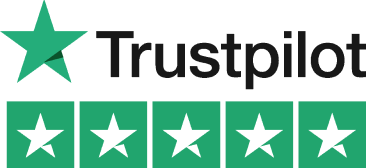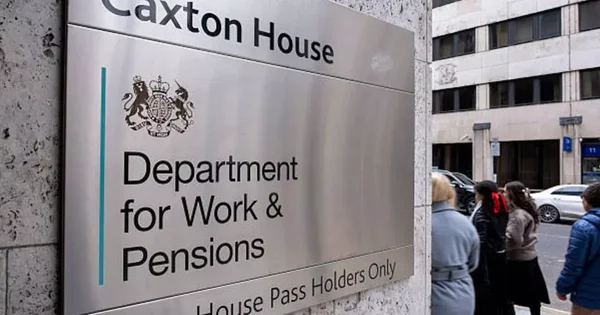Let’s Break This Down Together...
SEIS can sound complicated, can’t it? It’s packed with percentages, rules and tax jargon that can make even seasoned investors scratch their heads. But understanding it could unlock powerful tax savings and smarter investment choices.
This article walks you through what the Seed Enterprise Investment Scheme is, who qualifies, and how to claim the generous reliefs available. We’ll also cover the Advance Assurance process and key investor rules to keep things simple and clear.
By the end, you’ll know exactly how SEIS could work for you whether you’re a new investor or an early-stage founder looking to raise funds. Let’s dive in.
What exactly is the Seed Enterprise Investment Scheme?
SEIS was launched by the UK government in 2012 to kickstart investment in seed-stage businesses. It creates a pathway for entrepreneurs to access crucial early funding. SEIS was created to address the particular difficulties and challenges very early-stage and small companies face in attracting finance.
Under the scheme, investors can receive 50% income tax relief on investments up to £100,000 per tax year. This means a £10,000 investment could return £5,000 in tax relief. For example, if you invest £10,000 in a SEIS qualifying company, you could claim £5,000 back in income tax relief, significantly reducing your net cost of investing.
Investors purchase new shares in SEIS qualifying companies, and these shares must be paid for in cash. Companies can raise up to £150,000 under SEIS, but they must be very early-stage businesses. This reflects the higher risk associated with backing brand new ventures, as SEIS is designed for higher risk small companies and investing in these businesses can be challenging.
The scheme essentially creates a win-win situation. Startups get vital early funding, while investors receive significant tax breaks to offset their risk. SEIS supports small companies by making it easier for them to raise finance through equity investment.
Tax Benefits That Make SEIS Worth It
The headline benefit is the 50% upfront income tax relief. It stands out as remarkably generous compared to most other investment tax schemes.
If you hold your SEIS shares for at least three years, you’ll pay zero Capital Gains Tax on any profits when you sell them. This potential for tax-free gains is quite compelling. SEIS investments typically do not generate regular dividends; instead, the main returns are expected through capital growth.
Even if things go wrong, SEIS offers protection. If the company fails, you can claim loss relief against your Income Tax bill, softening the blow of a failed investment. While investors may expect significant tax benefits, returns are not guaranteed and there is a risk of loss.
There’s also a clever Capital Gains Tax reinvestment relief. You can defer tax on gains from other assets by reinvesting into SEIS-qualifying companies. After holding SEIS shares for two years, they become exempt from Inheritance Tax. This makes them a useful tool for estate planning as well.
Building a portfolio of SEIS investments can help diversify risk across multiple early-stage companies.

Is Your Company Eligible?
Not every business can qualify for SEIS. The company must be UK-based with a permanent establishment in the United Kingdom. It needs to be in its early stages – specifically trading for less than two years at the time the shares are issued. This emphasises the seed-stage focus of the scheme.
Size restrictions apply too. The company's gross assets must not exceed £200,000, and it must have fewer than 25 full-time employees. The company's valuation is also considered as part of these restrictions. The business must be conducting a qualifying trade. Most commercial activities qualify, but some sectors like property development, financial services, and farming are excluded.
Companies that have previously raised money under EIS or from Venture Capital Trusts cannot use SEIS. The scheme is designed for true beginners. Investors must not have control over the company or a connection to it, such as through employment or significant financial interest, as these factors can affect eligibility for SEIS relief.
Advance Assurance Process
The Advance Assurance process is an important first step for early-stage companies seeking funding through the Seed Enterprise Investment Scheme (SEIS). It provides a preliminary confirmation from HMRC that a company is likely to qualify for SEIS tax reliefs, giving potential investors confidence that their contributions will be eligible for valuable tax benefits. This reassurance can make a significant difference when attracting investment.
To start the process, a company must submit a detailed application to HMRC, including information about its structure, gross assets, trade activities, and investment plans.
HMRC reviews this to ensure the company meets SEIS criteria, such as having fewer than 25 employees, assets under £350,000, and avoiding excluded sectors like land, commodities, or financial services. Applicants receive a unique Ray ID to track progress, and the review can take several weeks.
If successful, HMRC issues an Advance Assurance letter valid for six months, confirming the company is expected to qualify for SEIS, provided it continues to meet the rules. While not a guarantee of final tax relief, this letter strengthens investor confidence and can be pivotal in fundraising.
Even if an application is initially rejected, companies can appeal or reapply after addressing issues. Many early-stage firms also benefit from guidance by experienced SEIS fund managers, who can improve the chances of a successful outcome and help secure investment.

Rules for Investors
As an investor, you can’t be an employee of the company. Having a connection to the company, such as being an employee or having a significant financial interest, can disqualify you from SEIS tax relief. However, being a director is sometimes permitted under specific circumstances.
You mustn’t hold more than a 30% stake in the business. SEIS isn’t designed for majority shareholders or those with controlling interests. The tax benefits only apply if you hold the shares for at least three years. Selling earlier will trigger a clawback of the relief by HMRC.
You can invest up to £100,000 in SEIS companies per tax year. This cap allows for a maximum of £50,000 in income tax relief annually. HMRC emphasises that SEIS shouldn’t be used primarily for tax avoidance. The investment should be made with genuine commercial motivations.
Getting Started with SEIS
For companies, the first step is usually securing advance assurance from HMRC. While not legally required, this gives potential investors confidence in the tax status. The investment must be in newly issued ordinary shares with full risk to capital. Preference shares or debt-like arrangements don’t qualify.
After receiving investment, the company must submit an SEIS1 form to HMRC. The tax authority then issues SEIS3 certificates for the company to pass to investors. I once helped a tech startup through this process, and the founder was amazed at how the SEIS status transformed investor meetings. Conversations shifted from scepticism to serious interest almost overnight.
Investors claim their SEIS relief through their Self Assessment tax return using the information on their SEIS3 certificate. This typically happens in the tax year following the investment. The entire process takes time, so both companies and investors should plan ahead. Rushing near tax year end often leads to complications.
For more detailed guidance on SEIS relief, eligibility rules, and the application process, investors and companies can search the HMRC website.

SEIS vs EIS: What's the Difference?
SEIS is specifically for seed-stage businesses, while its bigger brother EIS supports larger, more established companies. They serve different stages of the business lifecycle. The investment limits reflect this difference. SEIS allows companies to raise up to £150,000 in total, while EIS permits up to £5 million annually.
SEIS offers more generous income tax relief (50%) compared to EIS (30%). This acknowledges the higher risk associated with very early-stage investments. As companies grow, they often graduate from SEIS to EIS funding. The schemes are designed to work together across a business's growth journey.
EIS has less stringent requirements around company age, size, and assets. This makes it accessible to a wider range of businesses beyond the seed stage.
Final Thoughts
SEIS creates a powerful incentive for investors to back the riskiest stage of a company's journey. It supports those crucial first steps from idea to viable business. The combination of tax reliefs significantly reduces downside risk while preserving upside potential. This carefully balanced approach encourages genuine risk capital.
For startups, SEIS can mean the difference between getting off the ground or remaining just an idea. For investors, it offers a tax-efficient way to support innovation.
While the rules are strict, they ensure the scheme supports genuine entrepreneurship. This targeted approach channels investment where the UK economy needs it most.
Pie tax: Simplifying Seed Enterprise Investment Scheme Tax
Navigating SEIS tax reliefs doesn't have to give you a headache. The UK's first personal tax app makes the process remarkably straightforward.
Pie tax shows you instantly how SEIS investments affect your overall tax position. This helps you make smarter decisions about timing and investment amounts.
You can track multiple SEIS investments alongside your other income streams. This gives you a complete picture of your tax situation in real-time.
Fancy seeing how it works? Take a look at Pie tax today to discover how we can simplify your tax life.

Quick and Easy Guide to Adding SEIS Tax Relief in the Pie App
Follow these easy steps to ensure your tax reliefs are accurately recorded for your self-assessment:
To add SEIS tax relief, simply tap ‘Quick Add’ on the home screen of the Pie Tax App. From there, select ‘Add Tax Relief’, then choose ‘Tax Relief Investment Schemes’.Step 1

Next, select the specific investment relief you want to claim. Enter the name of the investment, the amount, and the date the investment was completed.Step 2










